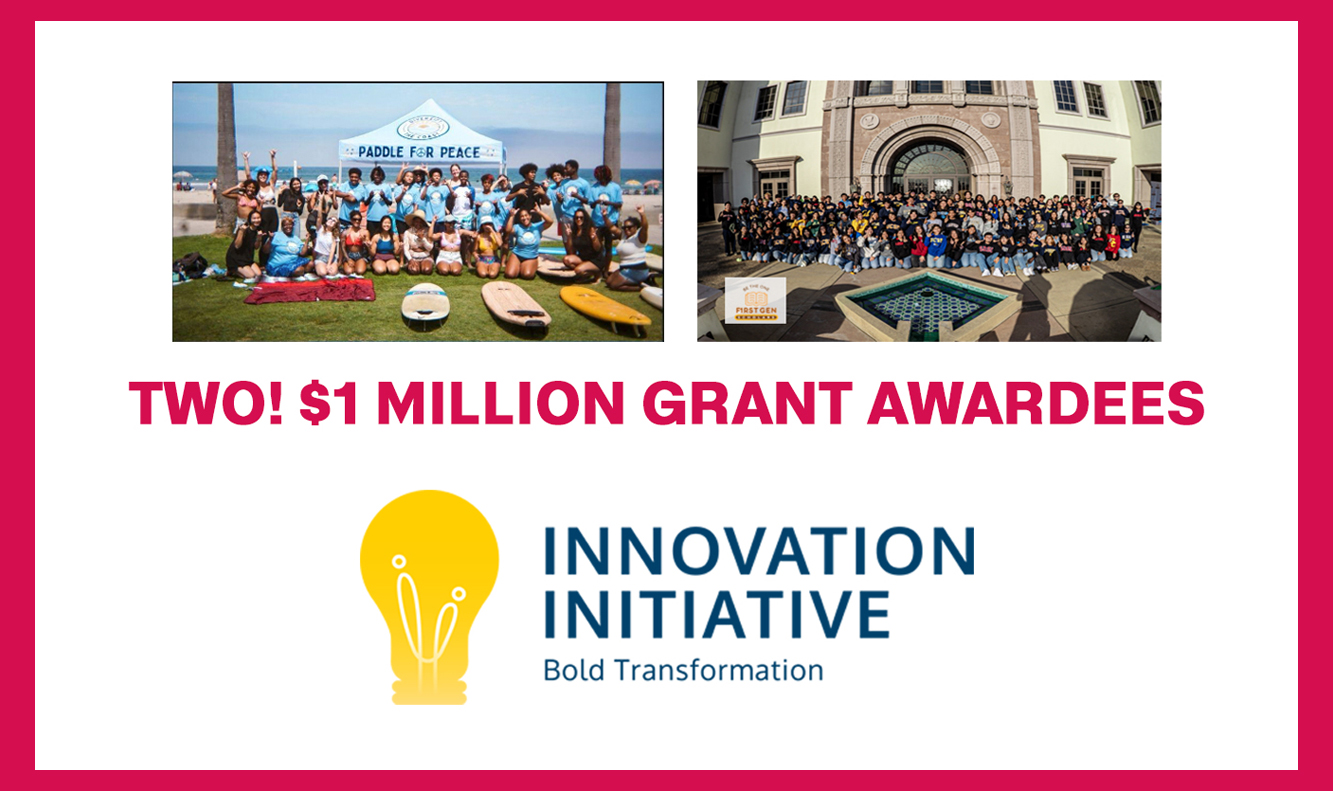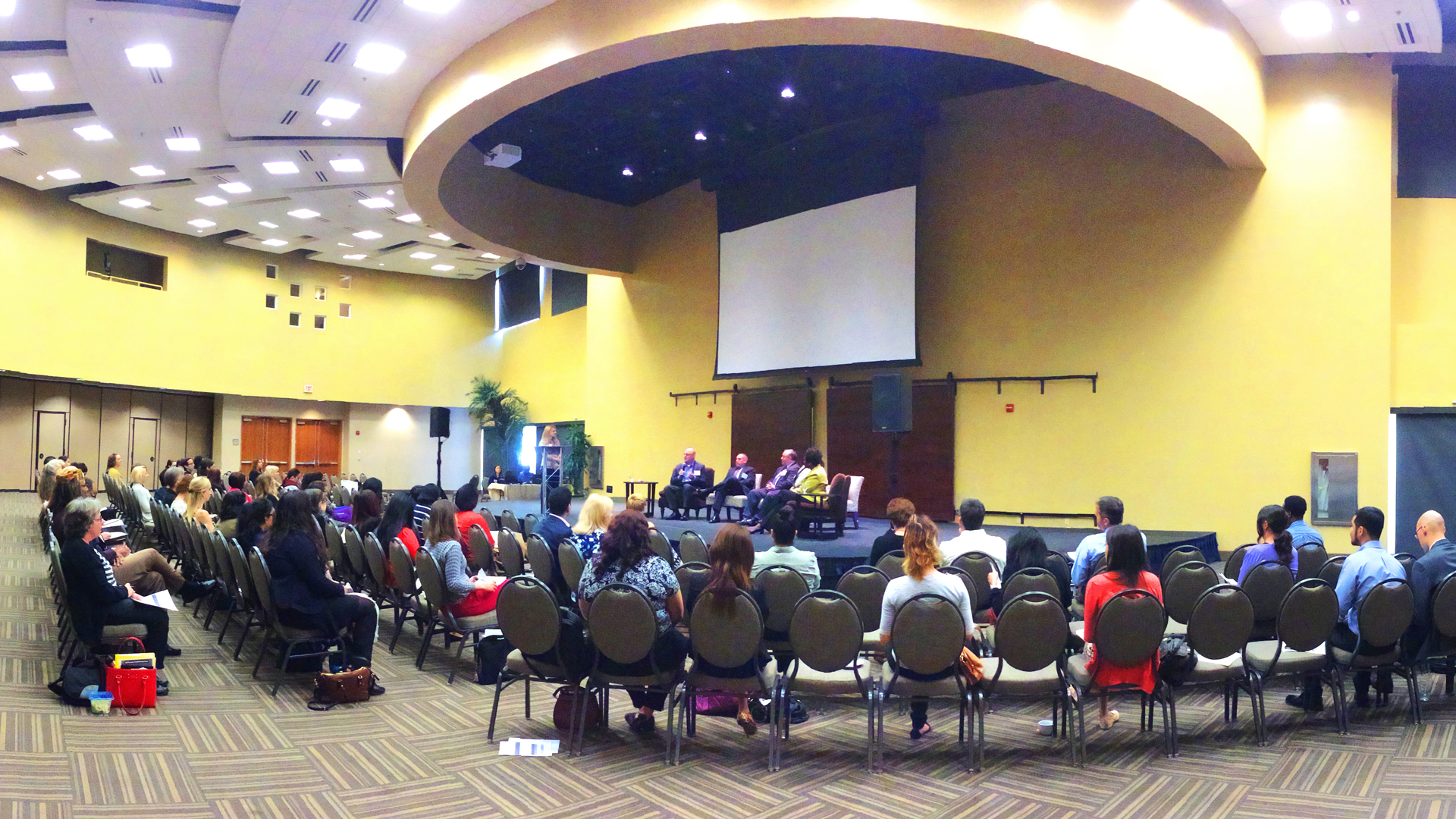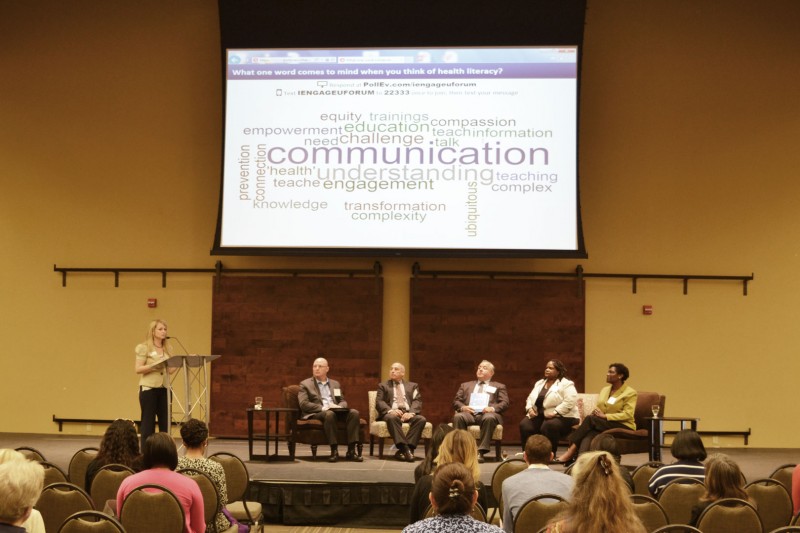March 2, 2016
The iEngageU Series: A Discussion on Health Literacy in San Diego
In our efforts to raise awareness about the health and wellness issues affecting the San Diego and Imperial Counties, AHF recently launched the iEngageU series. This platform brings together community leaders, executives, creative thinkers, and the general public to share multiple viewpoints and to move ideas into action to create a measurable impact on wellness in the coming years.
The topic for our first iEngageU Forum for 2016 was Health Literacy. Following up on the recent report, Improving Health Communications A Collaborative Plan to Address Health Literacy in San Diego County from Health Literacy San Diego, we invited a diverse panel of speakers to address the relationships between literacy issues, healthcare issues, and health literacy issues inside the Jacobs Center for Neighborhood Innovation.
Here is what we learned.
Speakers:
- Dr. Nora Faine – Medical Director, Molina Healthcare
- Jose Cruz – CEO, San Diego Council on Literacy
- Valerie Hardie – Literacy Program Administrator, READ/ San Diego Adult Literacy
- Ismael Cortez – Program Manager, Project SHINE with Cuyamaca College
- Aaron Hoskins, Supervisor of Digital Operations, Sharp Healthcare
- Moderator: Kristin Garrett Montgomery – CEO, CHIP
Overview
What is Health Literacy?
Broadly put, health literacy is the ability to successfully engage with our healthcare system in order to create a positive outcome.
Who does Health Literacy affect?
The strongest predictors for an individual’s health status include:
- Address
- Income
- Literacy Level
- Education Level
The populations most strongly impacted include refugees, immigrants, seniors, those with mental illness, and those with low literacy.
Yet our low-literate population isn’t comprised only of those who speak English as a second language. As Jose Cruz, CEO of San Diego Council on Literacy, pointed out, “70% of adults at the lowest literacy level in the U.S. are native English speakers.”
Due to the complexity of the U.S. healthcare system, healthcare literacy affects all of us to some extent, regardless of our education and socioeconomic status.
The Cost of Health Literacy
The cost of health literacy is twofold.
It affects the well-being of low-literate patients, resulting in improper use of medication, signing off on surgeries and other major procedures without their awareness, and a failure to follow-up with care. The results can be truly catastrophic and are avoidable.
There is also a huge financial cost associated with a deficit in health literacy.
According to Dr. Nora Faine, Medical Director at Molina Healthcare, “the lack of health literacy results in almost 200 billion dollars in healthcare costs.” This poses a huge opportunity to improve the efficiency of our system, to more successfully allocate funding, and to avoid medical care that could have been prevented through proper procedure.
Key Discussion Points / Findings
1. The critical role of communication
The key takeaway from the iEngageU Forum was that the healthcare outcomes we see begin in the place where literacy and care meet: in communication. The reason behind communication breakdowns are explored at length – from cultural perceptions and language barriers to a lack of proper vocabulary regarding healthcare.
For effective communication to take place, both parties must interact and understand one another. If either party involved is not communicating, not understanding, or not engaging, communication is not accomplished, and safe, healthful progress cannot be made.
“Health literacy is really about communication. Whether it’s verbal, in writing, visual, or even our perceptions of each other.” -Kristin Garrett Montgomery
In this sense, the forum is as much about teaching healthcare providers how to be better providers as it is about teaching people how to engage with the system.
2. The layers of literacy
“Healthcare is a language in and of itself, and it’s difficult for us to communicate. We don’t understand where our patients are coming from.” – Dr. Nora Faine
When we think of literacy, we tend to think of reading and writing abilities. But literacy, as a general definition, simply means “competence or knowledge in a specific area.” In the healthcare system, there are multiple layers of literacy that contribute to how effective (or ineffective) our efforts are. The communication breakdowns that occur often go beyond vocabulary, having to do instead with a misunderstanding of how the system itself operates.
Language literacy.
It may be surprising to realize that while many of the populations we serve do use English as a second language, a large number of them are also native English speakers who don’t have the education level or medical vocabulary to understand and communicate with the systems we have in place.
Even with basic reading skills, the healthcare system offers a nuanced language of its own that goes beyond what most of our daily lives require. Education around medical vocabulary may be necessary.
System literacy.
The American healthcare system and the processes behind how it works are not simple, even to those who have grown up in the U.S. and received a high level of education. Even for these individuals, there are barriers and moments of miscommunication. When we add the many layers of culture, language, and other socioeconomic factors, the possibility of a communication breakdown increases dramatically.
Digital literacy.
There is a difference between accessibility and usability. Even as new digital resources such as patient portals and smart mobile devices become more commonplace, this doesn’t necessarily mean that those at a low-literacy level understand how to use these tools as they were intended.
“Access is not the same as literacy. It needs to be conveyed and communicated in a way that people can actually use it…[to] make educated decisions about their health.”
-Aaron Hoskins
When we talk about literacy in these terms, it becomes apparent that communication breakdowns occur at all stages of healthcare and go beyond language barriers.
3. Culture & Literacy
Beyond “word-level” miscommunications, it’s equally important to consider the background that each patient is coming from and how this may influence their perspective and understanding of treatment. Depending on an individual’s cultural background, different healthcare situations may pose barriers based on that individual’s belief system.
Examples used in our discussion included a Somali woman who may not be comfortable discussing her reproductive problems or a Muslim man who may not be comfortable being treated by someone of the opposite gender. These nuances are many and varied, yet they inform the patient’s experience and outcomes.
The repercussion of illiteracy
Lack of proper healthcare is only one side effect of illiteracy or miscommunication. The experiences of disempowerment can take a toll in themselves and can lead to a lack of faith in the healthcare system as a whole. This is a self-perpetuating issue that must be considered.
“When [low-literate adults] go to the doctor’s office, [they] have to confront the pain that [they’re] dealing with…but [they] also have to confront the shame and embarrassment of not being able to read and communicate.” – Valerie Hardie, READ/ San Diego Adult Literacy
Culture is an influencing factor in the overall outcomes of healthcare and must be considered as such, as well as the secondary repercussions of those miscommunications.
4. Healthcare Literacy vs. Health Literacy
As one attendee aptly pointed out, healthcare literacy and health literacy could be defined as two separate but related issues.
Healthcare literacy has more to do with understanding healthcare vocabulary and how to engage with the system successfully.
Health literacy speaks to our ability to understand our own health and wellness: what good nutrition, exercise, and general self-care look like. While much of the discussion focused on managing patients once they enter the healthcare system, it’s equally important consider how to empower them to prevent becoming patients to begin with.
If literacy is about competency and understanding, then an understanding of preventative self-care is as important as understanding the healthcare system itself.
Forward-thinking solutions: what we can do now
Meet patients where they are
Offering multiple touch points for healthcare access—from telemedicine to patient portals, as well as understanding the value of ensuring that patients fully understand their diagnosis during the time of their visit—will help ensure retention throughout the cycle of care.
Focus on preventative care
By placing a greater emphasis on preventative care, we can lower the instances when medical care is needed and the expenses associated with them.
Further partnerships
Partnerships occur on multiple levels: from organization to organization, such as the union of literacy groups and healthcare advocacy groups. On an individual level, they occur between the patient and the physician. Treating communication as a two-way street and ensuring that patients fully understand their care is a critical component of its success.
”If we don’t have time for our patients, something has to change.” -Jose Cruz
Looking forward, a focus on communication, understanding, and engagement, and how to better serve these ends, are critical for all those who are invested in the development of a healthcare system that better serves the low-literate communities in our area.
I encourage you to watch the full iEngageU discussion on Health Literacy and share your own perspectives.
Afterwards, be sure to check our schedule for an upcoming iEngageU event. We look forward to your contribution to the conversation!

Alliance Healthcare Foundation
NSasaki@AllianceHF.org
About Alliance Healthcare Foundation
Alliance Healthcare Foundation is a San Diego-based nonprofit which works with nonprofit, government and community agencies to advance health and wellness throughout the San Diego and Imperial Counties. AHF works to serve the most vulnerable – the poor, working poor, children and homeless by providing grants, advocacy and education to support its region.
To learn more about AHF, visit: AHF on Facebook, AHF on LinkedIn, AHF on Google+, AHF on YouTube, AHF on Twitter
To learn more about our grantees, visit our Grantee Page.
Related News

Oct 29, 2025
i2 Awardees Announced
Doubling Our i2 Investment for Transformational Community Change $1 Million [...]

Sep 11, 2025
2025 Community Impact Report
Everyone Deserves a Chance to Be Well AHF Releases its [...]

Jul 16, 2025
Resident Leader Spotlights
Celebrating Our Resident Leaders’ Accomplishments We want to take a [...]


